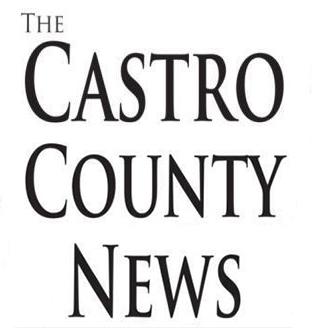Texans age 65 and older are now eligible to receive the COVID-19 vaccines produced by Pfizer and Moderna, but they're not in the first priority group.
Front-line healthcare workers and long-term care residents are in the first priority group, known as Phase 1A, and have been receiving vaccines for weeks.
That means vaccines for the 65-plus in the second group known as Phase 1B if the vaccine provider has enough supply. Because initial vaccine supplies are limited, doses are being allocated and administered via a multiphase distribution plan that prioritizes critical populations. For most older adults outside of Phase 1A, getting vaccinated is still a major challenge.
It may take several weeks for some providers to acquire enough vaccines to start administering them to members of Phase 1B. There are almost 4 million adults who are 65 years and older in Texas, according to the state’s interim COVID-19 Vaccination Plan. As of Jan. 12, Texas has only received just over 2 million vaccine doses, according to the state’s COVID-19 vaccination dashboard.
That first priority group, 1A, includes health care workers and residents of nursing homes and other long-term care facilities. Phase 1B includes people 65 and older and people 16 and older with at least one chronic medical condition that puts them at increased risk for severe illness from the virus that causes COVID-19, such as cancer, chronic kidney disease, heart conditions or obesity.
The best estimate of when vaccines will become available to the general public is springtime, according to the Texas Department of State Health Services (DSHS). But that could change. The state’s Expert Vaccine Allocation Panel (EVAP) is considering what criteria should be used for later stages of vaccine distribution.
The state is encouraging those in Phase 1B to visit one of the state’s new vaccine hubs, which “aim to provide more vaccines quicker and easier," according to the DSHS. Visit the COVID‑19 Vaccination Hub Providers page to find and register for a hub. Depending on the provider, people may be placed on a waitlist and contacted via phone, e-mail or text when vaccines become available.
The state is asking people to not just show up at a hub. Call or check the hub providers page to see if a hub is accepting walk-ins.
Eligible Texans can also check the Texas COVID-19 Vaccine Availability map to find alternate vaccine providers. Check the provider’s website or call to see if they have enough vaccine supply.
Texas is currently distributing vaccines to hospitals, pharmacies, local health departments, freestanding emergency rooms, vaccine hubs and other clinics all across the state. More than 7,000 providers have registered with the state to administer COVID-19 vaccines. As more vaccines become available, more providers will start to receive them.
Follow updates about the vaccine’s availability for various groups on the State Health Services' COVID-19 Vaccine Information page.
The initial COVID-19 vaccines, Pfizer’s and Moderna’s, require two doses, and after receiving the vaccination, people must follow-up dose a few weeks later to be effectively immunized.
“What you have is you get some degree, not optimal, but some degree of immunity a couple of weeks after the first dose,” Anthony Fauci, director of the National Institute of Allergy and Infectious Diseases, said in December. “That’s not optimal. After the second dose, you get optimal immunity anywhere from seven to 10 days after the second dose.”
After receiving the first dose of a COVID-19 vaccine, recipients should get a card from their provider saying when and where to return for their second dose, Texas Governor Greg Abbott has said. Follow-up text messages, e-mails and phone calls are also part of a statewide communication plan to ensure proper vaccination.
The Texas Immunization Registry (called ImmTrac2) will provide local health departments and provider organizations tasked with reminder outreach with regular updates on patients who are almost due for their second dose, according to the state’s interim COVID-19 Vaccination Plan.
The federal government has contracted with CVS and Walgreens to administer the COVID-19 vaccines at no cost to long-term care residents and staff. CVS is partnering with over 40,000 facilities, including nursing homes, assisted living communities and other types of long-term care facilities, to provide vaccines to up to 4 million residents and staff through the program, while Walgreens is partnering with roughly 35,000 facilities to provide vaccines to up to 3 million residents and staff. In Texas, roughly 3,200 skilled nursing homes and other long-term care facilities, totaling more than 225,000 beds, have registered for the program, which began on Dec. 28.
Texas’s interim COVID-19 Vaccination Plan says that providers can only enroll to administer COVID-19 vaccines if they agree to “administer COVID-19 Vaccine regardless of the vaccine recipient’s ability to pay COVID-19 Vaccine administration fees.”
Experts still need to learn more about the protection the vaccines provide under “reallife conditions,” the CDC says. It could take the body a few weeks to build up immunity after the second dose of a vaccine. And while the Pfizer and Moderna vaccines are effective at preventing symptoms of COVID-19, it’s not yet clear whether someone who’s been vaccinated can still catch the virus and transmit it to others.
The CDC says it could take months for the population to build up immunity and continues to recommend preventive measures such as face masks and social distancing.
“Every adult in Texas has the responsibility to follow the safe practices as we continue to work our way out of this,” Abbott said in a recent news conference.

